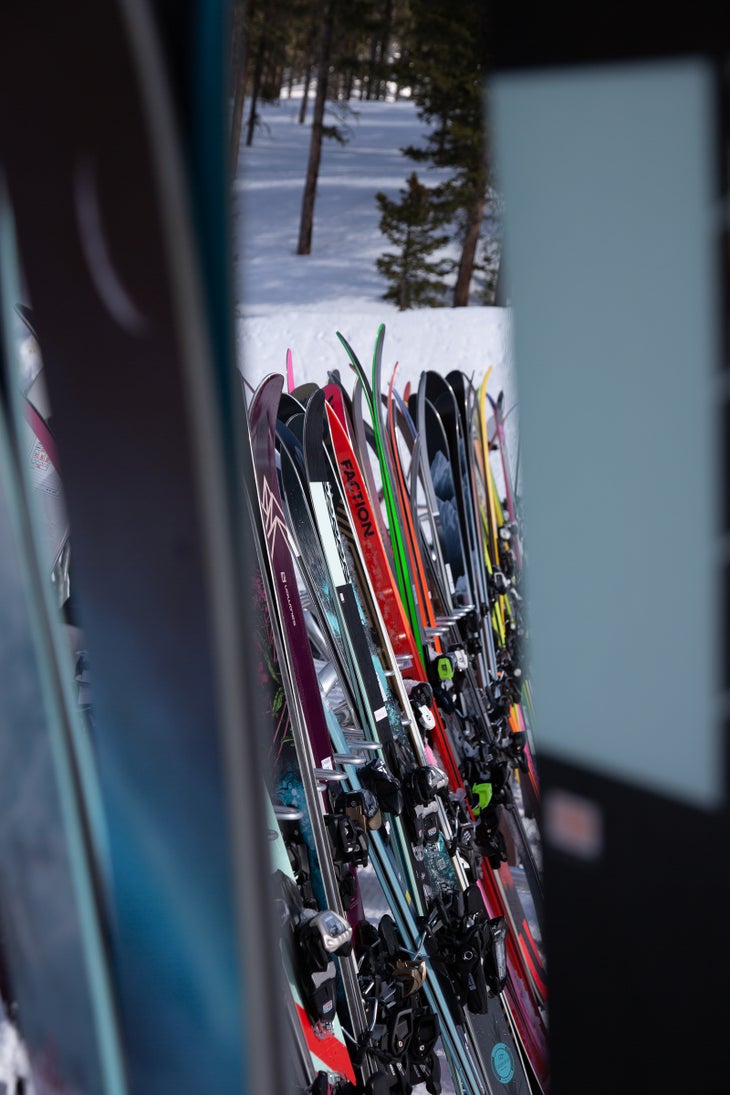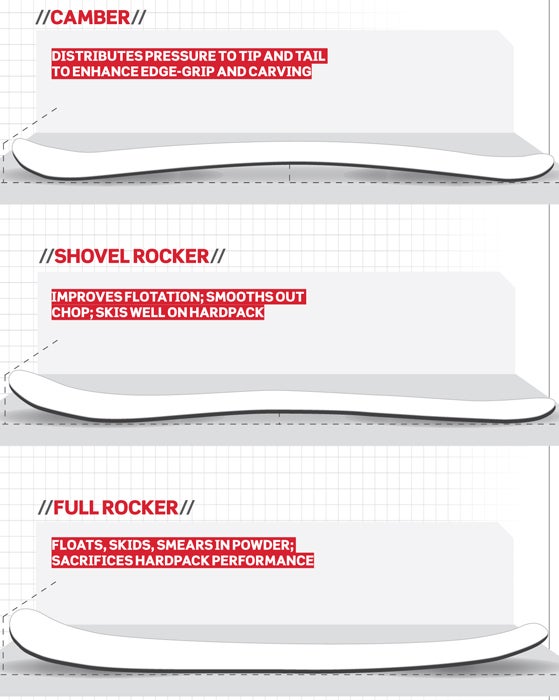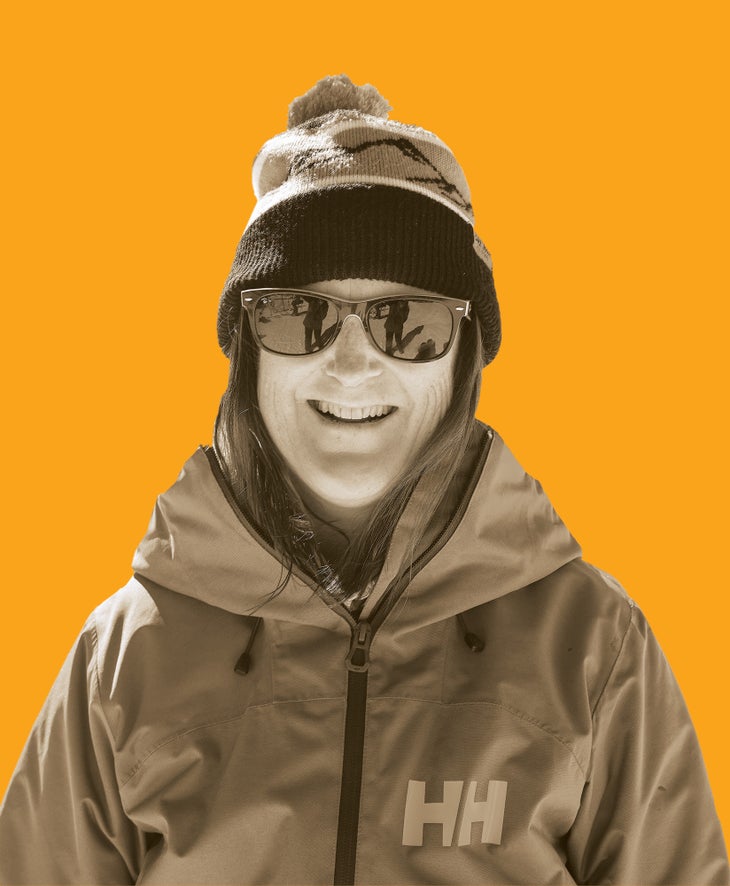Heading out the door? Read this article on the new Outside+ app available now on iOS devices for members! Download the app.
Tip 1: Educate Yourself
Do some research before visiting a ski shop or perusing skis online, suggests Tracy Gibbons, president of Sturtevant’s Ski Mart in Bellevue, Wash. A basic understanding of ski technology and terminology will help you feel less intimidated during the buying process. “Just some basic terminology will help you grasp what you learn in a shop,” says Gibbons.
Tip 2: Talk to the Experts
If possible, visit or call a local ski shop. The internet is a convenient tool for discovering new skis and finding great deals, but unless you know exactly what you’re looking for, it can lead you down the rabbit hole. “There’s a question and answer part of buying skis that the online experience just doesn’t do a great job of replicating,” says Gibbons. “A ski shop expert will help you focus on all the things you should be thinking about. Whether it turns into a 20-question game or a five-question narrowing-down process, experts can help you figure out what is ultimately the most important to you as a skier.”
Tip 3: Be Honest
When speaking to the shop pro, don’t talk yourself up or down. “We won’t judge you for speaking highly of yourself or being modest,” advises Gibbons. “Be honest about your ability and goals, because that’s what’s going to get you the best pair of skis.” And don’t assume a top-rated ski in a Gear Guide is the best tool for you. “Americans buy four-wheel drive cars to buy four-wheel drive cars,” she says. “But do you need all that? In other words, do you need a fat ski? Consider what you’re actually planning to do with that ski.”
Tip 4: Don’t Overthink It
Lots of people get caught up in what I call ‘paralysis by analysis,’” Gibbons says. “With so many good skis out there, you’re bound to like what you end up with.” Another reason to buy skis from a local shop: It may offer a performance guarantee, so if you don’t end up liking the skis you bought, you can return them.
Basic Ski Terminology and What it Means for You

Waist Width
The width of the middle of the ski, in millimeters; the middle number listed in a ski’s sidecut dimensions.
- Narrow waist (70-85mm): More piste-oriented ski; typically makes a ski more agile, precise, and better suited to carving/edging.
- Medium waist (85-100mm): All-mountain ski; a wider waist makes a ski more versatile and adept at tackling variable snow conditions and ungroomed terrain.
- Wide waist (100mm-plus): Wide all-mountain or deep snow ski; a fat waist helps a ski stay afloat in deep snow but makes it less precise on edge.
Early Rise/Rocker

The tip (and sometimes tail) of the ski is curved upward slightly to lift the base of the tip (and tail) of the ski off the snow. A longer rise/rocker means less of the ski’s edge makes contact with the snow, making it easier to pivot, initiate, and release turns.
Core
The inside makeup of a ski that influences its behavior. Can be made out of different combinations of wood, metal, carbon, fiberglass, and other materials.
- Wood core: Makes for a lighter-weight ski that tends to be more forgiving but less stable in crud and at high speed.
- Wood + metal in the core: Makes skis heavier, stiffer, and better able to absorb inconsistent terrain and chatter at high speed.
Turn Radius
Indicates the size of the turn the ski is designed to make at a certain length.
- Short turn radius (12-16m): Ski is designed to transition quickly from edge to edge, making it responsive and agile. Ideal for those who prefer short turns and skiing in bumps or trees
- Wide turn radius (17-22m): Ski is designed to make long arcs down the fall line. May be slower to respond from edge to edge but inspires more confidence at speed. Ideal for those who like to ski fast down wide-open spaces.
More Terminology for Skis and Boots: SKI Magazine’s Gear Glossary
Find My Skis…
Answer these questions and use your answers as a conversation starter with a ski shop expert to find your perfect pair of planks.
- How many years have you been skiing (consistently)?
- How many days per season do you ski?
- What is your ability level? Be honest.
- Which regions/states/specific ski areas do you spend most of your time skiing?
- What type of terrain do you mostly ski? Groomed runs? Moguls? Trees, bowls, chutes?
- Last pair of skis owned? What did you like about those skis? What didn’t you like about them?
- What are your skiing goals?
More About: Tracy Gibbons

President of Sturtevant’s Ski Mart in Bellevue, Wash.
With 36 years’ experience tuning, mounting, bootfitting, buying and selling hardgoods for Bellevue’s legendary Sturtevant’s, let’s just say Gibbons knows a thing or two about buying and selling skis.
Originally published in the 2021 SKI Magazine Gear Guide Print Edition. Make your life easier and get a subscription today.
